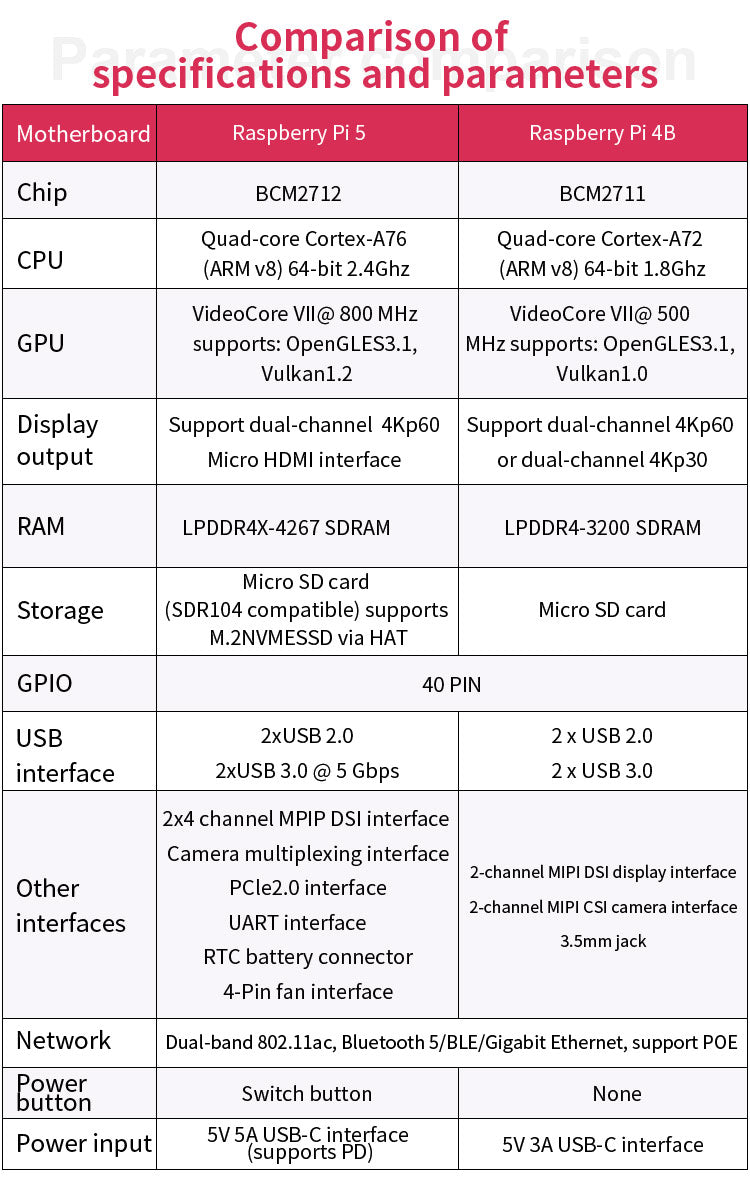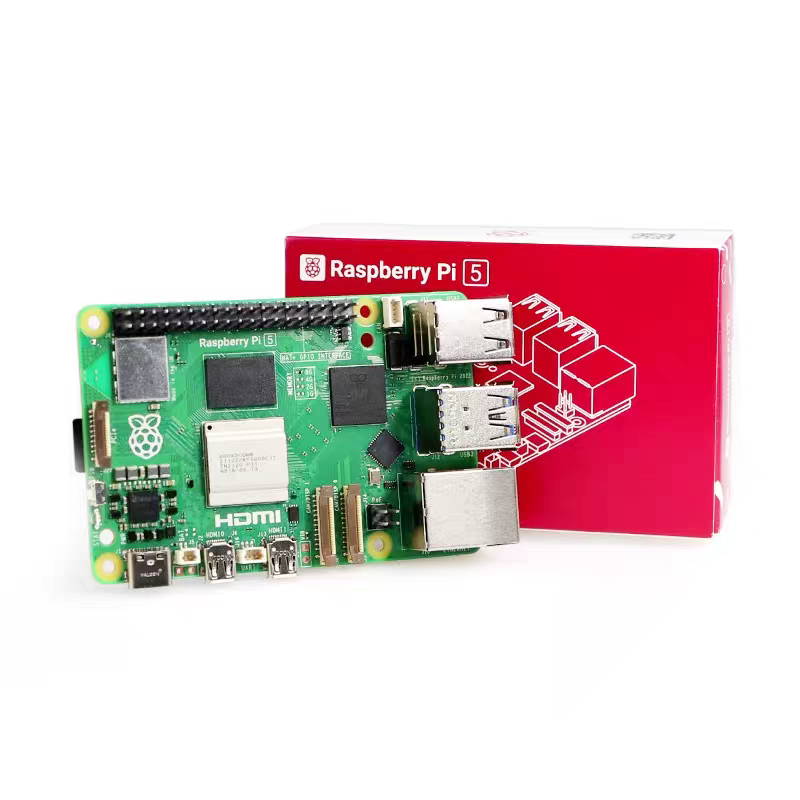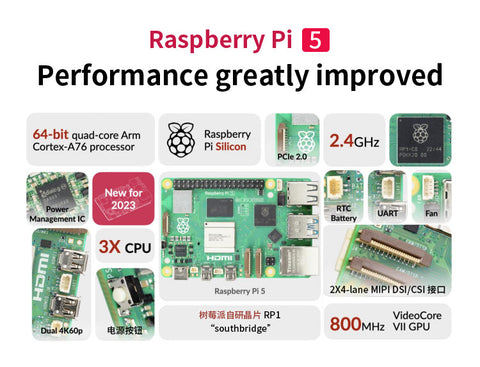Raspberry Pi, as an outstanding representative of open source hardware and software, has been attracting developers around the world with its powerful performance and wide range of application fields. In the Raspberry Pi family, Raspberry Pi 5 and Raspberry Pi 4B are undoubtedly two high-profile products. This article will conduct a detailed comparative analysis of these two products to reveal the main differences between them.
First of all, from the perspective of hardware performance, Raspberry Pi 5 has been significantly improved compared to Raspberry Pi 4B. Raspberry Pi 5 uses the Broadcom BCM2712 processor, which is a 64-bit quad-core 2.4 GHz Arm Cortex-A76-based processor. Compared with the previous generation product, its CPU performance has more than doubled. The Raspberry Pi 4B is equipped with an ARM Cortex-A72 quad-core processor, with the default clock frequency of each core being 1.5 GHz. While the Raspberry Pi 4B excels at handling compute-intensive tasks, the performance improvements of the Raspberry Pi 5 make it more competitive in high-performance applications.
Secondly, Raspberry Pi 5 has also achieved a leap in graphics performance. Its built-in 800 MHz VideoCore VII GPU provides powerful support for the desktop experience, capable of dual 4Kp60 display output. This feature not only improves the user experience, but also creates new application opportunities for industrial customers. Although the graphics performance of Raspberry Pi 4B is sufficient for most regular tasks, there is still a big gap compared with Raspberry Pi 5.
In addition, Raspberry Pi 5 has also made breakthroughs in I/O functions and scalability. It uses the RP1 south bridge, a brand-new chip designed inside the Raspberry Pi, to achieve upgrades in peripheral performance and functions. Not only does the chip more than double USB bandwidth, improving transfer speeds to external devices, it also supports a pair of four-lane 1.5 Gbps MIPI transceivers, tripling the total bandwidth. At the same time, Raspberry Pi 5 also supports any combination of up to two cameras or displays, providing more possibilities for multimedia applications. In comparison, Raspberry Pi 4B is slightly conservative in terms of I/O functions and scalability.
In terms of manufacturing innovation, Raspberry Pi 5 also shows its uniqueness. It uses intrusive reflow soldering technology for connectors, improving the mechanical quality of the product and increasing throughput. At the same time, the new single-layer soldering technology of fully wiring panels makes the edges of the circuit board neater. These manufacturing innovations not only improve product quality but also reduce production costs.
Finally, from a price point of view, Raspberry Pi 5 has indeed increased compared to Raspberry Pi 4B. This is mainly due to significant improvements in hardware performance and increased costs brought about by manufacturing innovations. However, considering the Raspberry Pi 5’s advantages in performance, graphics processing, I/O capabilities, and expandability, this price difference is reasonable.
To sum up, there are significant differences between Raspberry Pi 5 and Raspberry Pi 4B in terms of hardware performance, graphics processing, I/O functions and scalability. These differences give each of the two products unique application scenarios and advantages. When choosing a Raspberry Pi product, users should weigh and choose based on their own needs and budget.



